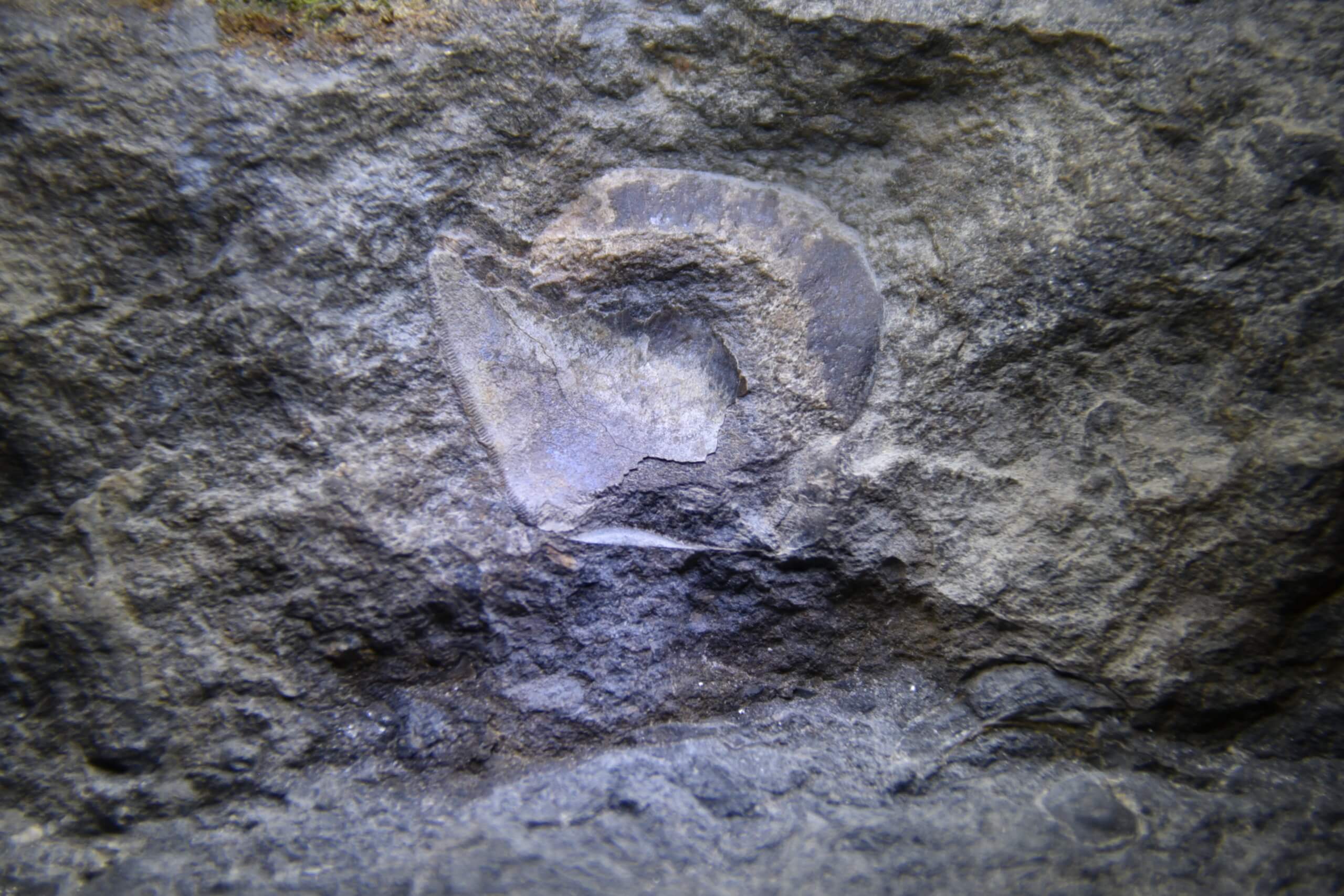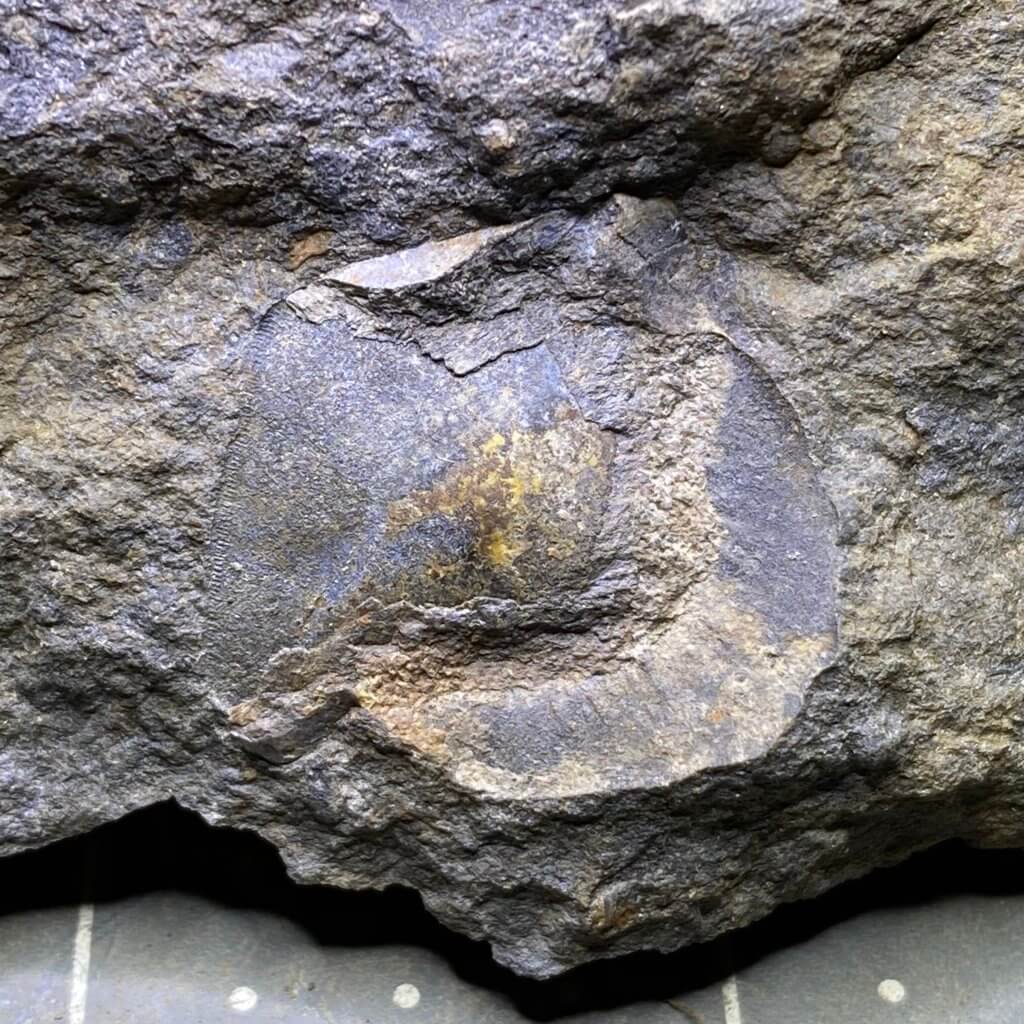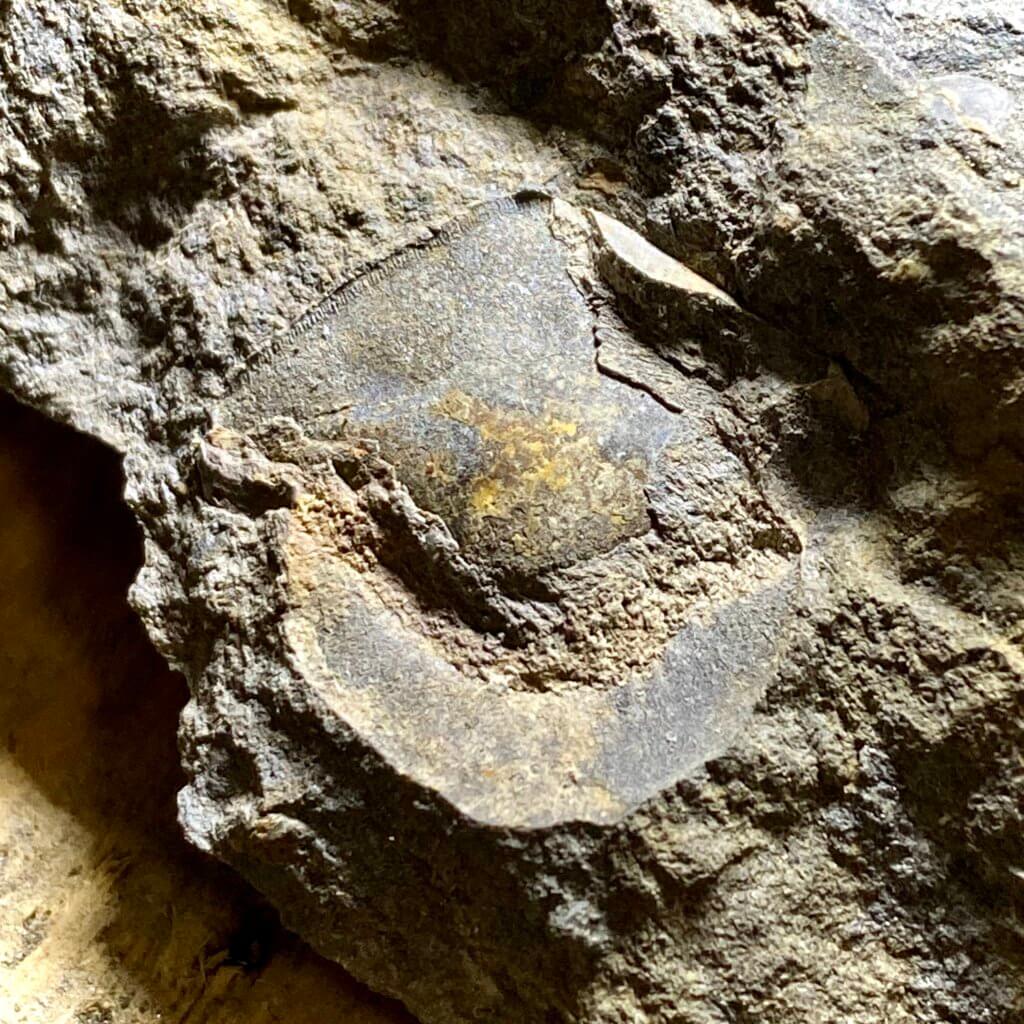Catalog Number: CG-0034
My first Petalodus ohioensis Shark Tooth of 2020 is my fifth overall. This specimen is the first with a three dimensional root.
I keep a ready supply of limestone boulders near the lab in which I can search through the matrix. This boulder perhaps came from the same general area as the first four teeth, although there is no way to know for certain. However, I can about 95% sure this did come from that batch of limestone.
The entire rock contains many other interesting specimens including a Sea Pen in the back, a complete Brachiopod, and a few other specimens. The negative includes an example of Fenestella visible on its surface.
Matrix Preparation
Many of the specimens I have found over the past month have received a polish if it was possible. When I found the tooth, it was attached to a piece of the boulder that was very heavy. So I cut the matrix using a 7-inch diamond blade down to the size you see below.
I then used a 4″ diamond blade to smooth down the cuts to ready it for polishing. I polished the front and left sides as the specimen is seen below to 6000 grit.
Negative Specimen Piece
I also kept the negative side of the rock as it includes very important details. Finding Petalodus shark teeth in limestone is difficult because the tooth doesn’t just fall out. It adheres tightly to the matrix and you can’t much control how it’s going to split. With this specimen, the right side of the crown stuck to the negative portion of the matrix that was sheered off.

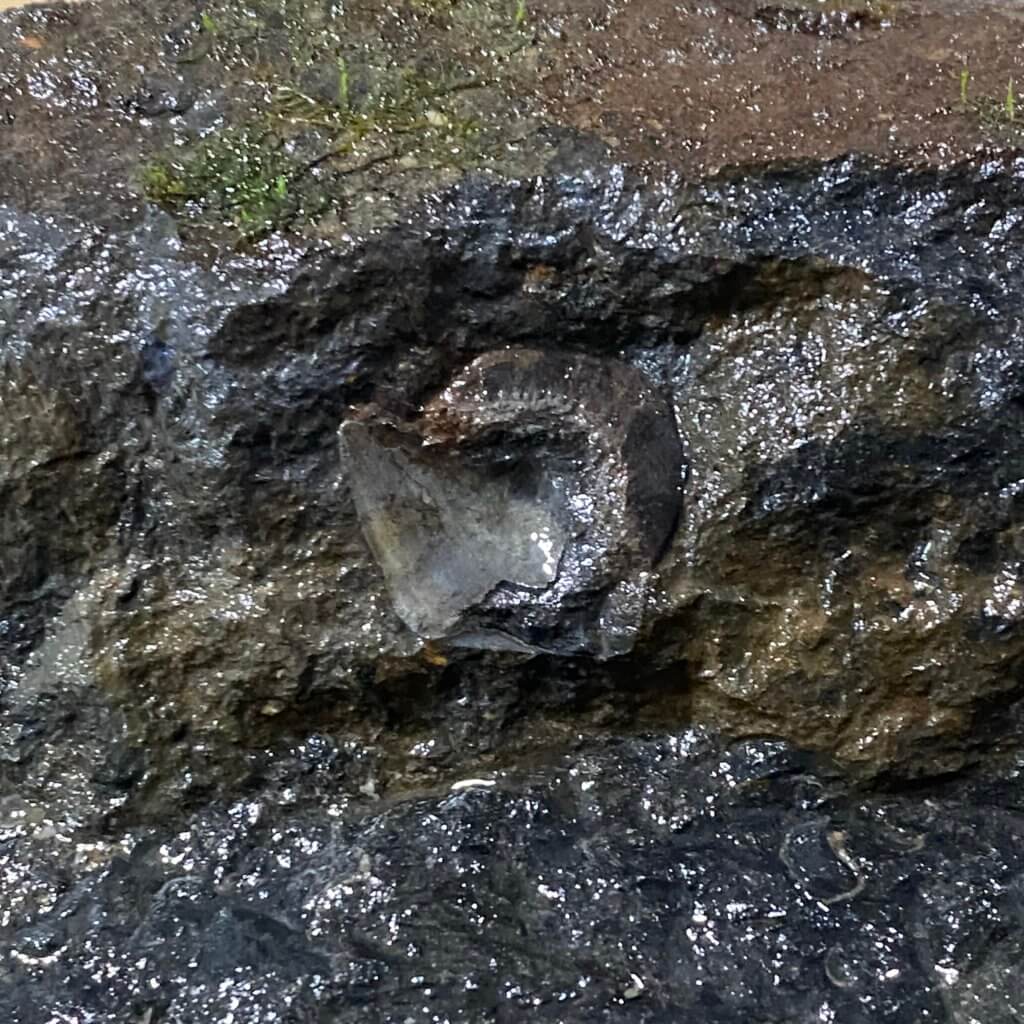
Wet specimen when first found. Increased contrast shows crown against the limestone matrix. 
Wet view wider. This was before the bottom front of the rock was smoothed and polished. 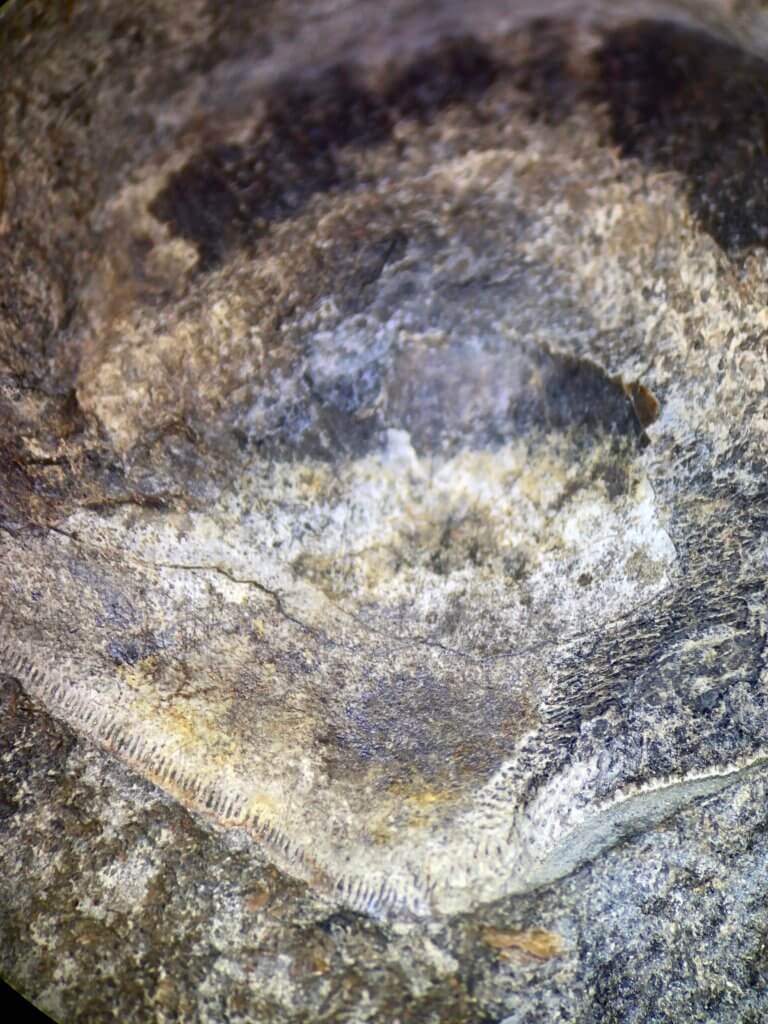
Crown and cusp detail. 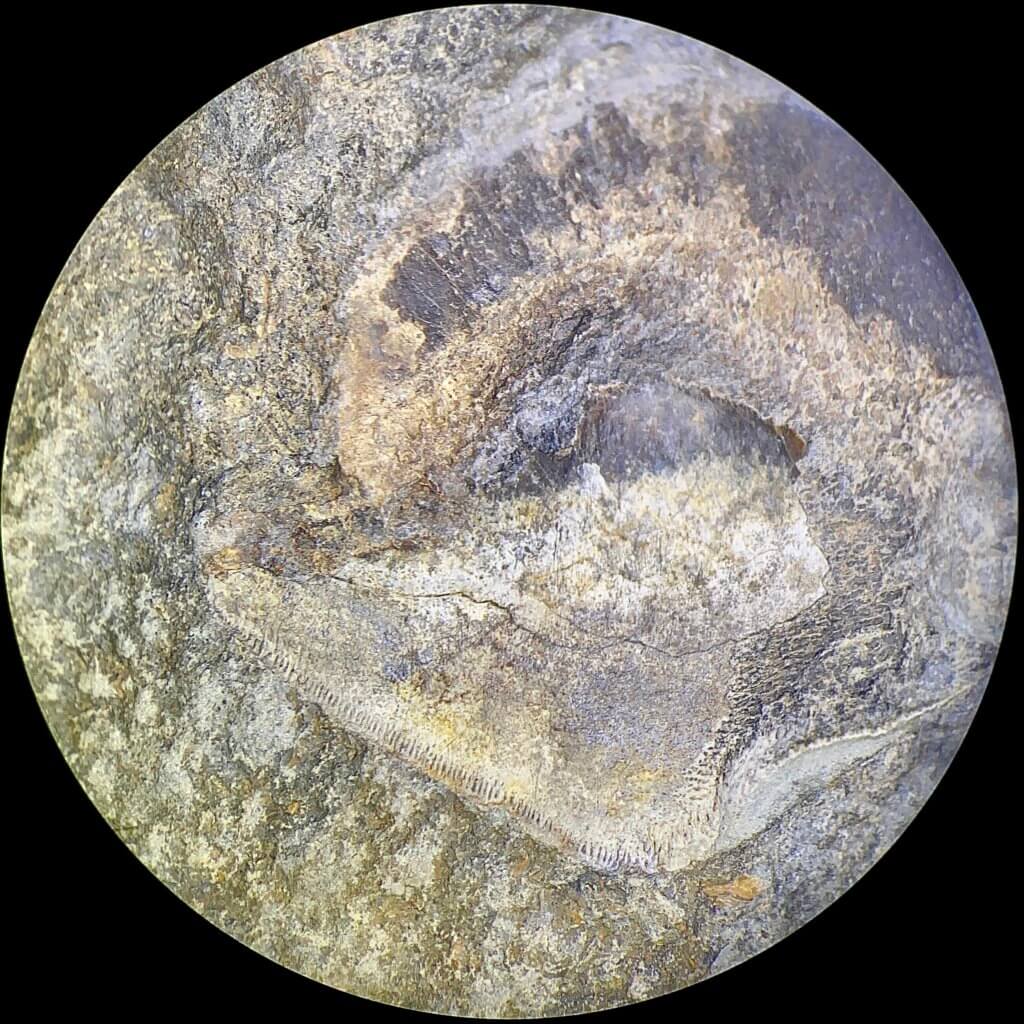

Root detail 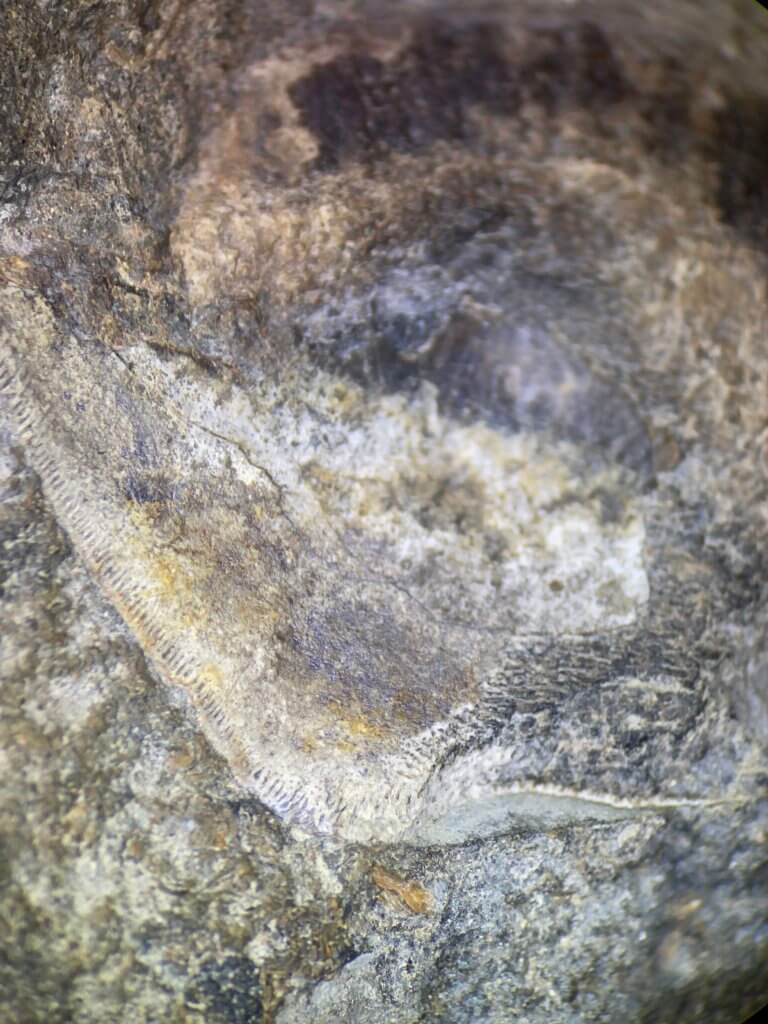

Entire specimen after front and left side polishing. 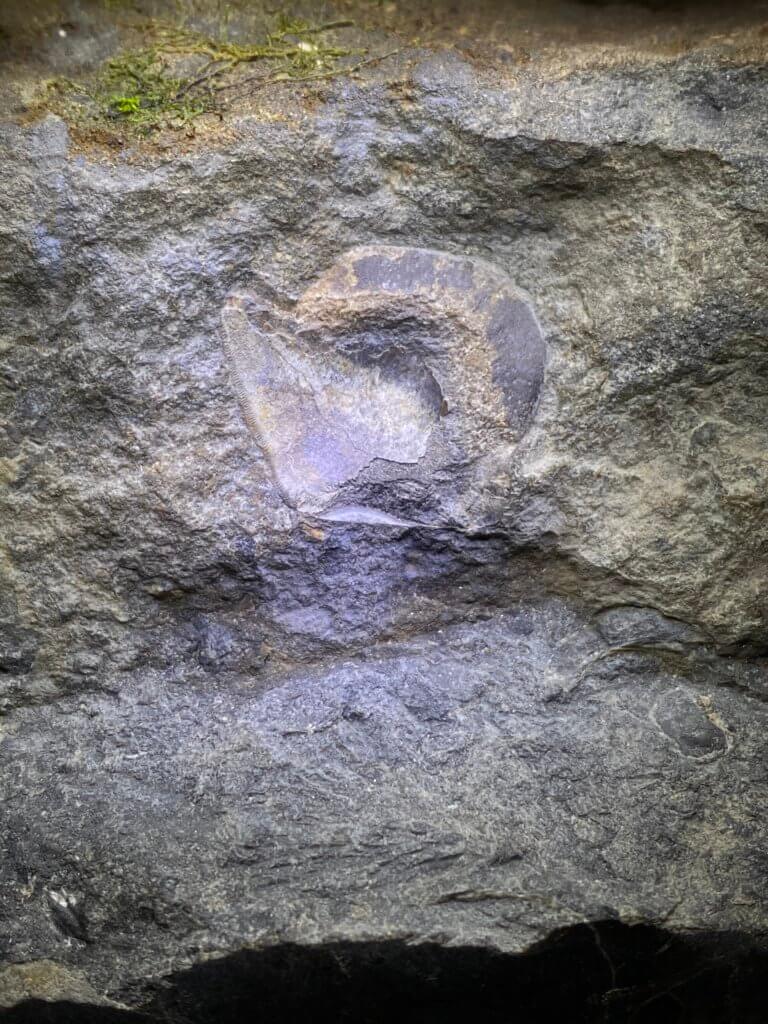

Measurement of the serrated edge of the crown from the cusp.
Negative Side Views
The negative was nearly as interesting as the main specimen. Half of the crown is buried in the matrix and the serrations along the crown edge are shown in the rock. Meanwhile, the distal crown tongue is buried on this half of the specimen.
Petalodus Tooth Anatomy

The taxonomy of Petalodus
There are 16 different species of Petalodus described in literature. I am assuming most or all of these are only based on the findings of teeth. I have found no evidence online of anyone ever finding remains of Petalodus fossil bones or jaws.
More Online about Petalodus
- Fossilworks – Taxon Page
- John A. Harper, Reflections on Petalodus, a Common Late Paleozoic “Shark”1 Tooth Found in Western Pennsylvania’s Rocks, Pennsylvania Geology V. 48 No 2, p. 3-11
- Albert J. Robb III “Notes on the occurrence of some petalodont shark fossils from the Upper Pennsylvanian rocks of northeastern Kansas,” Transactions of the Kansas Academy of Science 106(1), 71-80, (1 April 2003). https://doi.org/10.1660/0022-8443(2003)106[0071:NOTOOS]2.0.CO;2
- Karavankina – the Fossils of Southern Karavanks – Petalodus ohioensis

